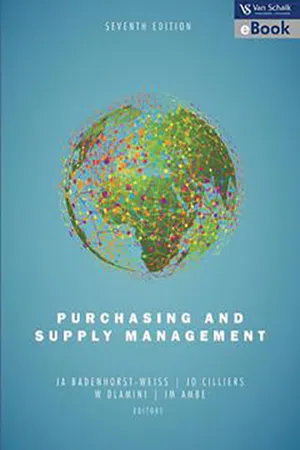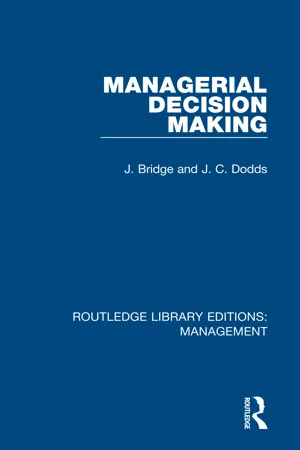Business
Supply Function
The supply function in business refers to the relationship between the quantity of a good or service that suppliers are willing to produce and the price of that good or service. It is typically represented graphically as an upward-sloping curve, indicating that as the price of the good or service increases, suppliers are willing to produce and offer more of it in the market.
Written by Perlego with AI-assistance
Related key terms
4 Key excerpts on "Supply Function"
- eBook - ePub
- Andrew Barkley, Paul W. Barkley(Authors)
- 2016(Publication Date)
- Routledge(Publisher)
A Supply Function shows the relationship between the quantity of a good available for sale in a market and its price. Points on a Supply Function represent the quantity of a specific good that will be placed on the market at each price.- Supply = the relationship between the price of a good and the amount of that good available at a given location and at a given time.
(8.1) Qs = f(P),where Qs is the quantity supplied of a good, and P is the price of the good. When the price of a good increases, the quantity supplied of a good also increases.Figure 8.1 Individual firm short-run supply curve8.1.1 The individual firm’s supply curve
In the next several chapters, the notation Qs denotes the market, or aggregate (total), level of quantity supplied, and qs denotes a single firm’s supply, which is their contribution to Qs . This allows for a distinction between graphs for single firms and graphs for an entire market supply. As shown below, market supply is the aggregated supply of all individual firms that produce and sell the same product.Understanding supply and demand at the aggregate, or market, level, requires understanding the component parts of an individual firm’s supply curve. Specifically, deriving the supply curve for an entire market begins with a study of the costs incurred by an individual firm, as shown in Figure 8.1 ).An individual profit-maximizing producer will continue to produce a good until MR = MC. The situation shown in Figure 8.1 relates to a firm in a competitive industry. A competitive firm is a price taker, and therefore the firm has no control over the price of the product it sells. The price is fixed, constant, and equal to the MR line associated with each price: P0 , P1 , and P2 .Quick Quiz 8.1
Why does the assumption of competition result in a fixed price? Why is the price equal to the MR?For example, at a given point in time, price P2 is fixed and given. The firm cannot change it. At the market price of P2 in Figure 8.1 , this single firm will maximize profits by setting MR = MC, or P = MC at q2 units of output. If the firm produced one more unit of output (q2 + 1), the additional (marginal) costs would increase to a level above the marginal revenue line, and profits would decrease. At one less unit of output (q2 - eBook - ePub
Economics for Investment Decision Makers
Micro, Macro, and International Economics
- Christopher D. Piros, Jerald E. Pinto(Authors)
- 2013(Publication Date)
- Wiley(Publisher)
Exhibit 1-7 .EXHIBIT 1-7 Market Equilibrium Price and Quantity as the Intersection of Demand and SupplyIn Exhibit 1-7 , the shaded arrows indicate, respectively, that buyers will be willing to pay any price at or below the demand curve (indicated by ↓), and sellers are willing to accept any price at or above the supply curve (indicated by ↑).Notice that for quantities less than , the highest price that buyers are willing to pay exceeds the lowest price that sellers are willing to accept, as indicated by the shaded arrows. But for all quantities above , the lowest price willingly accepted by sellers is greater than the highest price willingly offered by buyers. Clearly, trades will not be made beyond .Algebraically, we can find the equilibrium price by setting the demand function equal to the Supply Function and solving for price. Recall that in our hypothetical example of a local gasoline market, the demand function was given by = f (Px ,I,Py), and the Supply Function was given by = f (Px ,W). Those expressions are called behavioral equations because they model the behavior of, respectively, buyers and sellers. Variables other than own-price and quantity are determined outside of the demand and supply model of this particular market. Because of that, they are called exogenous variables . Price and quantity, however, are determined within the model for this particular market and are called endogenous variables . In our simple example, there are three exogenous variables (I, Py, and W ) and three endogenous variables:Px, , and . Hence, we have a system of two equations and three unknowns. We need another equation to solve this system. That equation is called the equilibrium condition , and it is simply = - eBook - ePub
- Badenhorst-Weiss JA, Cilliers JO, Dlamini W, Ambe IM(Authors)
- 2018(Publication Date)
- Van Schaik Publishers(Publisher)
In addition, the purchasing of maintenance and other services that the operations function uses is now more than ever a responsibility of purchasing and supply management (see Chapter 16). In a service operation such as a bank, an adequate supply of equipment and paper is essential. In retail organisations such as grocers or hardware shops, purchasing and supply management is responsible for obtaining the products that will be displayed on the shelves for the final customer to buy. As previously indicated, sales (as part of the marketing function) depend on efficient purchasing and supply. On the one hand, the purchasing and Supply Function’s contact with suppliers enables it to identify products with good market potential and thus to provide the marketing function with clues for extending and adapting the product range. On the other hand, the marketing function also depends on the timely availability of stock for marketing purposes. In this way, the purchasing and Supply Function should assist marketing in exploiting marketing opportunities. The purchasing and supply management function is also responsible for providing certain operating requirements, such as vehicles, for the marketing function. Finally, in the supply chain philosophy, the demands of the ultimate customer are communicated back along the chain, so that purchasing and supply forms an important link in communicating the requirements of the customer to the supplier and the supplier’s supplier. The human resources function also depends on the efficient purchase and supply of requirements, such as equipment for a cafeteria or other tangible fringe benefits for staff - eBook - ePub
- J. Bridge, J. C. Dodds(Authors)
- 2018(Publication Date)
- Routledge(Publisher)
For some production situations the over-riding problem may be to find the best uses of fairly inflexible available inputs. If these inputs can be converted into several different outputs, the firm has to decide which outputs and in particular which combination of outputs best achieves the firm's objectives. In contrast, another firm may have little choice over final outputs but may have a choice of production methods utilising different combinations of inputs. In general, every enterprise has to make a decision about input usage or the mix of final outputs, or both, and the two decisions must be consistent with one another if maximum profit or any other relevant objective is to be achieved.In the case of the production decision, an objective of maximising profit and of achieving optimum resource allocation within the firm lead to the same answer. A profit maximising firm will try to obtain the maximum output from a given level of inputs by using the best production techniques possible given current knowledge. If the firm wished to make fewer goods or services than this, it could save money and scarce resources by using fewer inputs.3-2 The Production Function
The production function is written:Q = f(a , b , c , … n)Restricting our discussion to single-product firms for the moment, Q shows the maximum quantity of output that can be produced from a units of input A, b units of input B, etc. …, or the maximum flow of output that can be produced from the corresponding set of input usage rates * By adjusting the combination of factor inputs different output levels can therefore be achieved. The production function is a technological relationship and its direct estimation in any instance would rely on engineering data relating outputs to inputs. Economists however can test hypotheses concerning production functions, indirectly, by studying cost data (see Chapter 4 ).An example of a production function isQ =k · lwhere Q is the maximum output that can be produced from k units of input K and l units of input L. If inputs are infinitely divisible and can be substituted for each other without restriction, then a particular level of output can be produced by an infinite number of input combinations tions. For example, given the production functionQ =(k · l)
Learn about this page
Index pages curate the most relevant extracts from our library of academic textbooks. They’ve been created using an in-house natural language model (NLM), each adding context and meaning to key research topics.



